Top speed 999 km/h Wingspan 37 m First flight January 24, 1961 | Length 43 m Engine type General Electric CJ805 | |
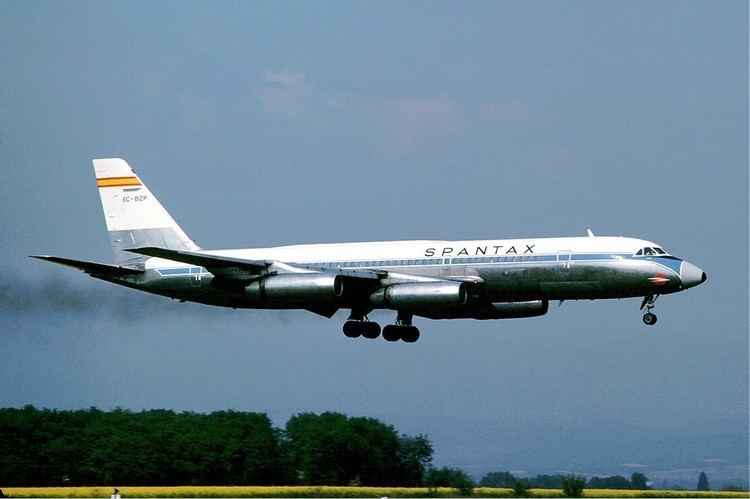 | ||
1962 jet convair 990 coronado de swissair aterriza en madrid barajas por primera vez landing
The Convair 990 Coronado was an American narrow-body four-engined jet airliner produced by the Convair division of General Dynamics, a stretched version of their earlier Convair 880 produced in response to a request from American Airlines. The 990 was lengthened by 10 ft (3.0 m), which increased the number of passengers from between 88 and 110 in the 880, to between 96 and 121. This was still fewer than the contemporary Boeing 707 (110 to 189) or Douglas DC-8 (105 to 173), although the 990 was 25–35 mph (40–56 km/h) faster than either in cruise.
Contents
- 1962 jet convair 990 coronado de swissair aterriza en madrid barajas por primera vez landing
- F 0700 convair 990 coronado at edwards air force base video
- Design and development
- Operational history
- Variants
- Operators
- Accidents and incidents
- Survivors
- Specifications Convair 990A
- References

F 0700 convair 990 coronado at edwards air force base video
Design and development
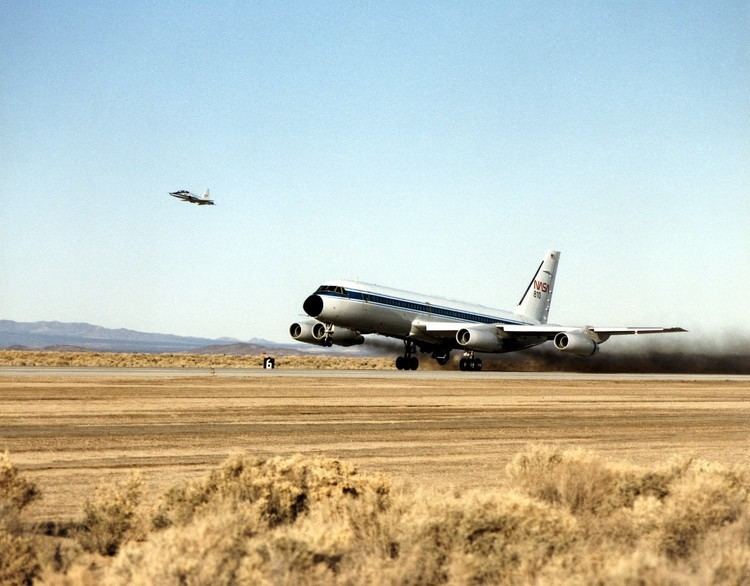
American Airlines asked Convair to design an aircraft for coast-to-coast flights, able to fly nonstop from New York to Los Angeles against the wind. They wanted a somewhat larger passenger capacity than the 880, which was the smallest of the first-generation U.S. jet airliners. The 990 began flight testing January 24, 1961.
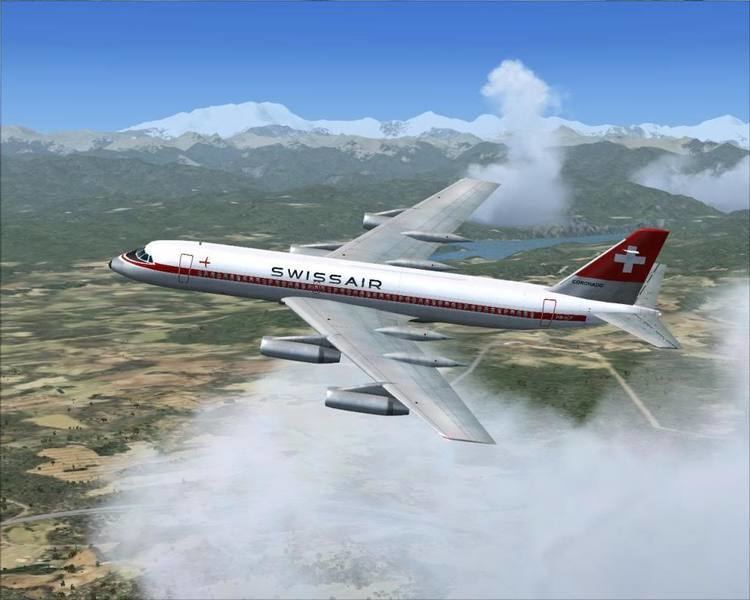
One change from the 880 was the large anti-shock bodies on the upper trailing edge of the wings to increase the critical Mach and reduce transonic drag. The inboard shock bodies, which were larger, were also used for additional fuel tankage. Later during the design period, Convair modified the design to include fuel in the outboard pods as well, but during the initial test flights the extra weight caused the outboard engines to oscillate in certain conditions. The pods were redesigned once more, and shortened by 28 inches (710 mm), causing increased drag. The inner set of pods also served a secondary role as fuel dumps for the fuel tanks, and the outlet pipe is prominent.
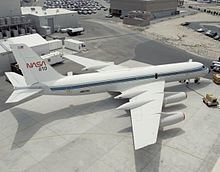
The engines were also changed to the uprated General Electric CJ-805-23s, which were unique in that they used a fan stage at the rear of the engines, compared to the fan stage at the front of the engine found on the Pratt & Whitney JT3D that powered the 990's competitors. The engine was a simplified, non afterburning civil version of the J79, used in military fighters. Like the J79, the CJ805 was smoky.
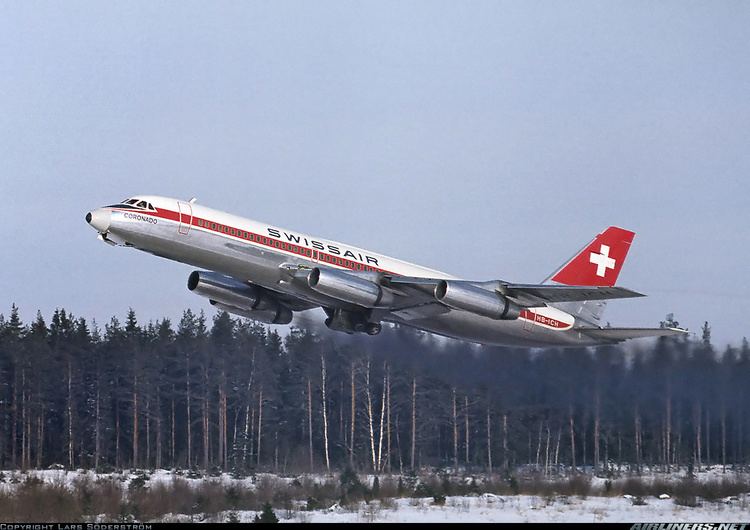
Like the 880, 990s incorporated a dorsal "raceway" added to the top of the fuselage to house the two ADF antennas and one VHF antenna
Operational history

The 990 did not meet the specifications promised and American Airlines reduced their order as a result. The 990A was developed by adding fairings to the engine nacelles, among other changes. Despite the modifications from the basic 880 and those in response to drag problems in testing, the aircraft never lived up to its promise of coast-to-coast nonstop capability from JFK to LAX. American Airlines' timetables show little or no difference in scheduled time between 707 and 990A flights; AA began to dispose of their 990As in 1967.
In 1963 the 990A was reported to burn 13,750 lb/h at Mach 0.84 (483 knots) at 35,000 ft at a weight of 200,000 lb. In contrast, a modern 757 carries up to 220 passengers and burns around 7000 pounds per hour.
Swissair bought eight 990As beginning in 1962, operating them on long-distance routes to South America, West Africa, the Middle and Far East, as well as on European routes with heavy traffic. Their fleet was withdrawn from service in 1975. Scandinavian Airlines also operated Coronados on their long-haul schedules to Tokyo and other destinations in the Far East.
The 990's niche was soon captured by the Boeing 720 and Boeing 720B, derivatives of the Boeing 707, and later by the Boeing 727. By the time the assembly line shut down in 1963, only 37 990s had been produced, bringing General Dynamics' entire production of commercial jet airliners to 102 airframes. The failure of airlines to broadly accept the Convair 880 and 990 led Convair to suffer what at the time was one of the largest corporate losses in history, although they later profitably built fuselages for the McDonnell Douglas DC-10, KC-10 and MD-11.
When the major airlines retired their Convair 990s, they found a second life on charter airlines. Spantax of Spain had a large fleet until the mid-1980s and so did Denver Ports of Call. In 1967, Alaska Airlines purchased Convair 990 PP-VJE from Varig, and operated it as N987AS in scheduled airline service until 1975.
Variants
Operators
*Original operators.
Accidents and incidents
Survivors
Specifications (Convair 990A)
Data from Macdonald Aircraft Handbook
General characteristics
Performance
